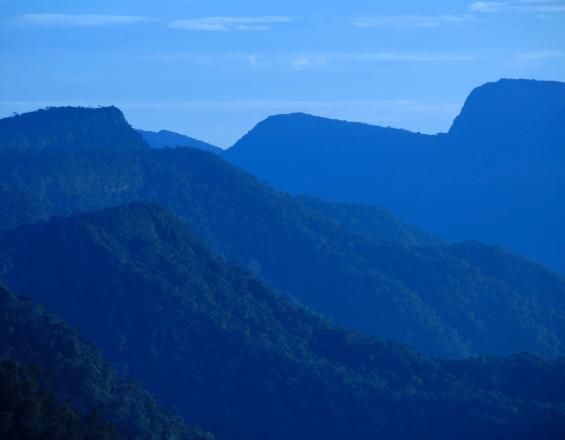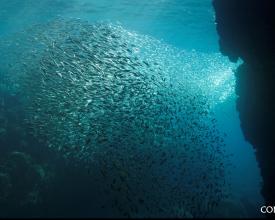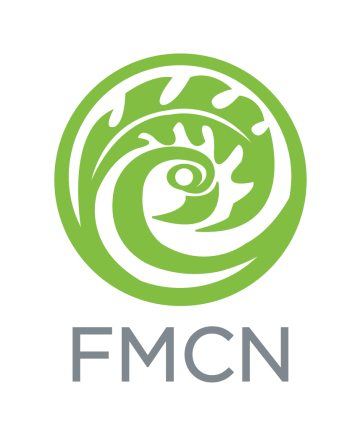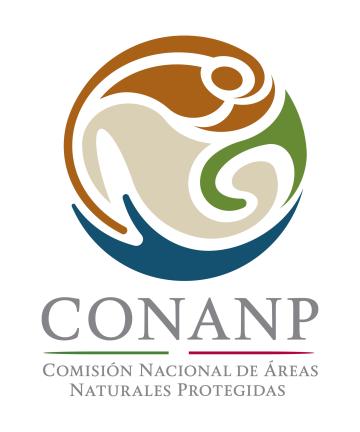
Seeking Protected Area Financial Sustainability

Despite their high value, many PA are having trouble making ends meet. Conservation costs are rising, driven by global challenges such as climate change and growing socio-political pressures. Government budget allocations are not enough to keep up and in many cases they are shrinking.
Therefore, it is necessary to develop financial strategies to support effective PA management and achieving conservations goals. This solution describes a step-by-step process to develop a financial strategy. BB1 reflects on the basic information needed; BB2 guides the development of a business model; and BB3 describes how to turn business models into investment-ready projects.
Context
Challenges addressed
* Insufficient public resources to manage protected areas.
* Lack of understanding or knowledge on sustainable finance options and solutions.
* Communication difficulties between conservationists and investors.
* Insufficient accountable park management.
Location
Process
Summary of the process
The building blocks are all part of a process for developing a PA financial strategy. BB1 describes the actions needed to know a PA financial gaps, needs and the context. BB2 exposes the process of designing a business model including identifying assets, coming up with a revenue-generating idea, conducting a feasibility study and developing a business model. BB3 reflects on the steps needed to transform the business model into a reality, from designing a project to finding the financial resources.
Without a clear idea of financial gaps and needs, it is very difficult to develop a business model. Without a business model it is very difficult to attract investments in conservation. Without investments in conservation it is very difficult to effectively manage PAs. Without an effective PA management, it is unlikely that conservation goals will be achieved, such as halting biodiversity loss. Without a healthy planet it is unlikely international commitments as Aichi Targets and Post-2020 Biodiversity Agenda, SDGs and Paris Agreement will be met.
Building Blocks
Clear picture of PA financial gaps, needs and opportunities
A protected area (PA) financial strategy should aim to covering all costs of the implementation of the PA management plan in order to achieve the conservation objectives.
Step 1. Know the starting conditions in the PA, e.g. conservation objectives, financial gaps and business opportunities. This information can be found in the PA Management Plan and its financial plan.
PA management plans describe activities, needs and goals protected and conserved area managers are working to achieve. Financial plans provide an overview of a site’s current financial state projections of future income, long term financial goals and needs and steps to achieve the conservation objectives established in the PA management plan.
Step 2. Determine financial gaps. Identify the financial requirements for implementing the management plan or a strategic component, e.g. fire management (how much does fire management costs? Including personnel, equipment, infrastructure and supplies). Consider basic or optimum scenarios to achieve conservations goals. Map all available resources from public and private funding and, finally, calculate the gap by determining the difference between available and necessary resources for each scenario.
Enabling factors
- Up-to-date PA management and financial plans available for identifying financial needs and gaps.
- Institutional capacities and tools on finance and management to develop basic and optimum scenarios and determining financial gaps.
- Having a site business plan can be helpful for initiating a conservation finance project, as they help to identify economic goals for the site and strategies for achieving them.
Lesson learned
One of the biggest challenges in developing effective conservation finance projects is mindset. Many conservation practitioners have been habituated to depend on government funds, donations and international cooperation. There is a strong sense that protected areas are a public resource and should be publicly funded. However, in this reality where public funds are insufficient, understanding that protected areas can and should work to generate their own incomes is essential to enabling implementation of financial mechanisms to unlock other sources of funding. Changing mindsets requires time and creates significant challenges, until there is a critical mass of well-informed and engaged protected area managers.
Design of a business model
Addressing the financial gap requires securing investments from public and private sources.
Sept 1. Come up with a revenue generating idea, which can involve sale of a tangible product (e.g. coffee); a deal involving an intangible product (e.g. sale of carbon credits); or provision of a service (e.g. accommodation facilities). In all cases, opportunities can exist within the boundaries of the protected area or in the surrounding area.
Step 2. Elaborate the idea into a business model by identifying assets in the protected area that can be used to provide revenue for conservation, e.g. exceptional beauty, biodiversity, offsetting potential, etc.
Step 3. Conduct a feasibility study to prioritize ideas and determine whether to develop a project or not. A feasibility study explores multiple aspects of a business idea to determine if it is practical, viable and suitable for a specific context.
Step 4. Make the business case for the prioritized idea(s). A business case is intended to provide justification for pursuing a given business model. Ultimately, the business case will be used to inform investors and convince them to invest in a given proposal. It is also useful to inform partners and other actors and stakeholders involved in the development of a conservation finance project.
Enabling factors
- Enabling legal frameworks for the business idea. Some options for sustainable financing depend on legal or regulatory measures (e.g. taxes or compensation requirements). Where these measures are not in place, it may be possible for PA managers to work with policymakers to revise relevant frameworks. However, it may take longer for this idea to actually take place.
- Strong partnerships with different stakeholders (e.g. government actors, civil society organizations, local business and communities) for developing and implementing the project.
Lesson learned
The legal and institutional frameworks can enable or obstruct a business idea. A site may attract tourists, but if the legal framework does not allow the PA to financially benefiting from tourism (e.g. by sending entry fees to a central government budget rather than staying in the site) the idea will not address the financial gap. Therefore, it is important to ensure that the feasibility study includes a legal analysis of the business ideas.
It is essential that business models consider the needs, capacities and interests of different stakeholders (e.g. government actors at all levels, civil society organizations, local businesses and industries, and communities living in and around the area), otherwise these groups can create obstacles.
Finally, it is important to consider the cost of the process of developing and realizing the business. This includes not only the necessary initial investment, but also the time and resources needed to elaborate a business plan and undertake necessary studies and consultations. In some cases, undertaking the steps detailed here can take several years.
Development of a sustainable investment project and reach out to financiers
Once a business model is available, it is time to develop a project and find a financier.
Step 1. Design a project to pursue the business idea. It should include a clear structure and sound contractual frameworks (e.g. actors involved in implementing the project and their roles; financial flows; decision-making processes; and legal entities relevant for the project).
Step 2. Identify potential financiers, which may be environmental trust funds or impact investments. A trust fund is a vehicle for collecting, investing, allocating and managing assets, filled through donations, public funds or others (e.g. taxes). Impact investments are those made with the intention to generate positive, measurable social and environmental impact alongside a financial return. They are usually made by development finance institutions, private foundations, pension funds, individual investors and others.
Step 3. Develop a marketing strategy for the project.
Step 4. Develop a project business plan (PBP). A PBP is a written description of the future of a project (usually 3-5 years). It describes the resources and capacities that exist now and those that will have been secured in the future. A PBP gives an investor confidence that the project team knows where they are going and how they will get there.
Enabling factors
- Incubator for Nature Conservation. Building a financial strategy for PAs requires substantial time, resources and capacities. An incubator focused on conservation facilitates access of PA managers to the resources needed and helps them to link with investors.
- Legal and institutional frameworks that channel funds for conservation and which allow PA managers to engage in business (e.g. have the ability to enter into contracts, receive funds, etc.).
- Strong partnerships and effective outreach and communication strategy.
Lesson learned
One of the biggest challenges for designing a successful project is the need of specialized expertise, in a context of already very limited resources to meet basic financial requirements of PA management. For example, in the case of a national park run by a government authority, a lawyer should be consulted to address governance questions related to the possibility of cooperating with private enterprises and NGOs to circumvent bureaucratic requirements and budgetary limitations.
Impact Investors often face challenges in finding mature projects to invest in. Sites that apply for a globally recognized certification programme, such as the IUCN green list, have a baseline and indicators that allow site managers and potential investors to measure impact. Therefore, having a certification and developing a PBP and a communication strategy may help to unlock private investments for conservation.
Achieving the Aichi Targets and the Post-2020 Biodiversity Framework regarding PA effectively managed will require a general mindset change to engage the private sector in nature conservation.
Impacts
Effective PA management can have high conservation impacts, as well as social and economic benefits. This solution supports effective management by seeking financial resources.
Without a clear idea of financial gaps and needs, it is very difficult to develop a business model. Without a business model it is very difficult to attract investments in conservation. Without investments in conservation it is very difficult to effectively manage PAs. Without an effective PA management, it is unlikely that conservation goals will be achieved, such as halting biodiversity loss. Without a healthy planet it is unlikely international commitments as Aichi Targets and Post-2020 Biodiversity Agenda, SDGs and Paris Agreement will be met.
Beneficiaries
Protected Area Managers, Conservation Practitioners, local communities, local NGOs, impact investors, private owners of voluntary conserved areas.









